Excellent Archaeological Museum in Jerez de la Frontera, Andalucia. Prehistory to the Modern Age
By Nick Nutter | Updated 12 Mar 2022 | Cádiz | Museums |
Login to add to YOUR Favourites or Read Later
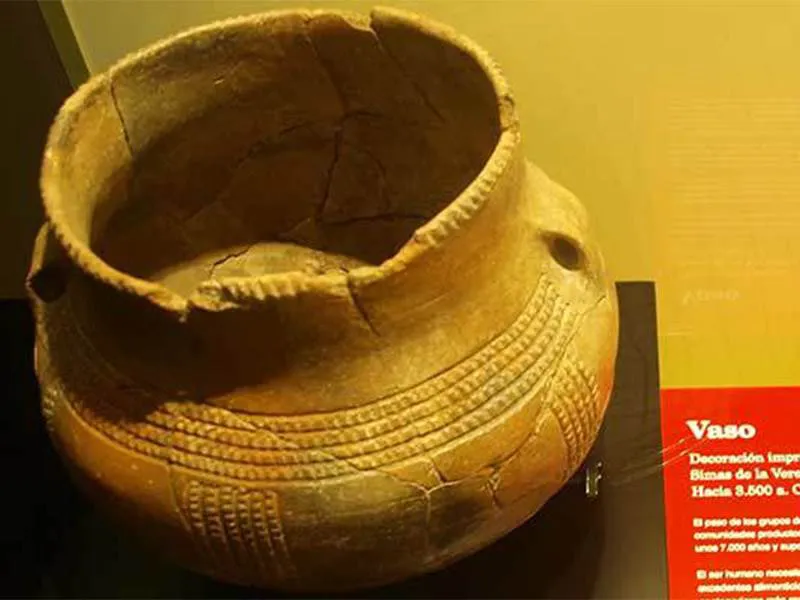
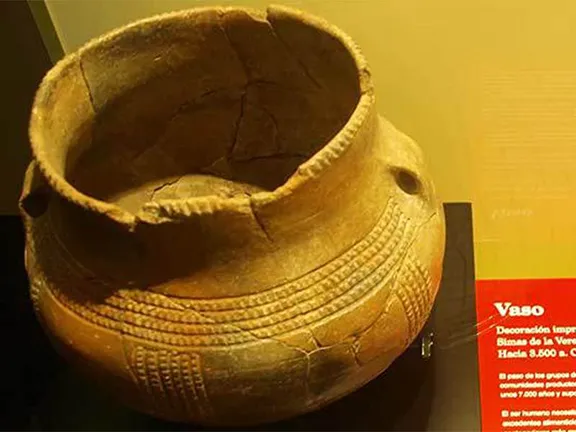
Neolithic Ceramic Bowl
The Archaeological Museum at Jerez de la Frontera has recently been refurbished and renovated and in quality and type of display now rivals any provincial museum in Andalucia. There is only one drawback, most of the information is in Spanish although free audio handsets are available in a number of languages. The building that houses the museum the Old City Hall in Plaza del Mercado, was itself declared a building of Cultural Interest in 1962. The displays take you from deep prehistory through to the modern age.
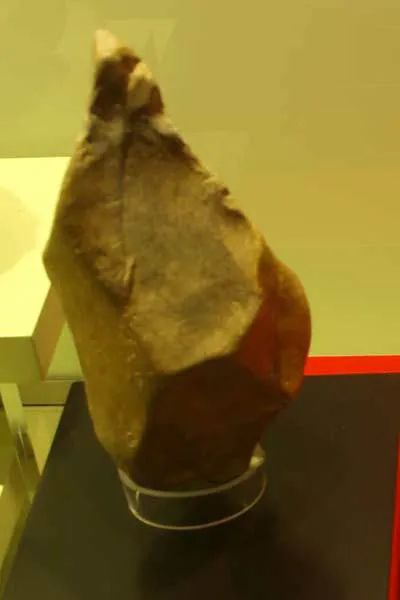
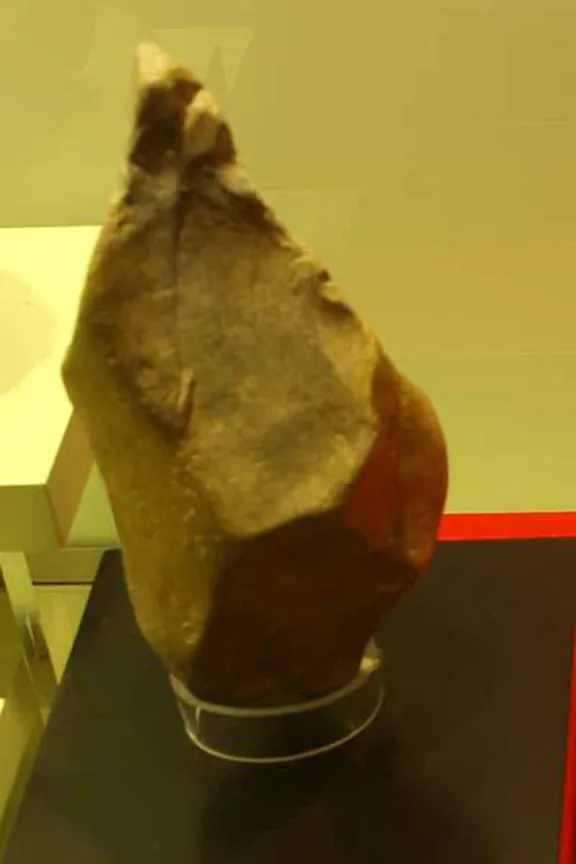
Acheulean Stone Tool
The oldest exhibit is a stone tool found at Laguna de Medina showing that humans were around between 650,000 and 400,000 years ago. This piece is interesting. At the moment there is an argument that our part of Europe was first occupied by hominids who had dispersed out of Africa about 1.2 million years ago or a little earlier. Traces of those early hominids can be found at Orce and Atapuerca. The question is what happened to those early settlers. Did they manage to stay on in isolated refuges through a number of ice ages or did they retreat or die out to be replaced by another dispersal that occurred about 600,000 years ago. If the former case proves correct then the tool displayed at Jerez will have been made by a descendant of Homo antecessor, if the latter case is correct the tool will have been made by Homo heidelbergensis.
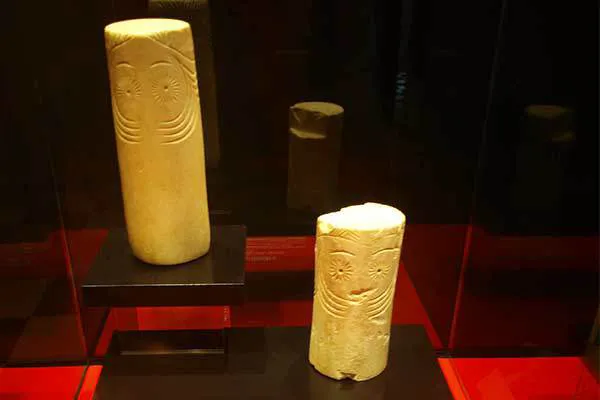
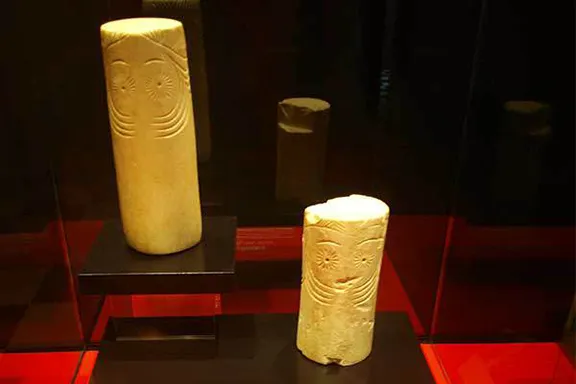
Idols
It is surprising to see another set of exhibits, firstly because they are rare and these are in an especially good condition, cylindrical large eyed idols. made of marble the pieces displayed date back to about 2,500 BC. This variety of cylinder is richly decorated. As is usually the case with this type of idol, there is decorative engraving on the top half. It displays two large round eyes with long radial eyelids –sun eyes- each framed by an eyebrow and four lines of facial tattoos. A long zig-zagging mane of hair, outlined by a dovetail-shaped stroke, falls from the forehead down the back to the middle. The hair is not marked in the top. Cylindrical idols (of which there are many different types) are generally thought to be characteristic of settled communities in the south west of the peninsula throughout the 3rd millennium B.C.
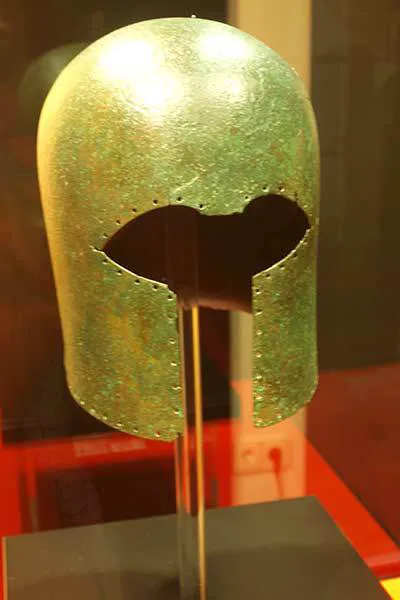
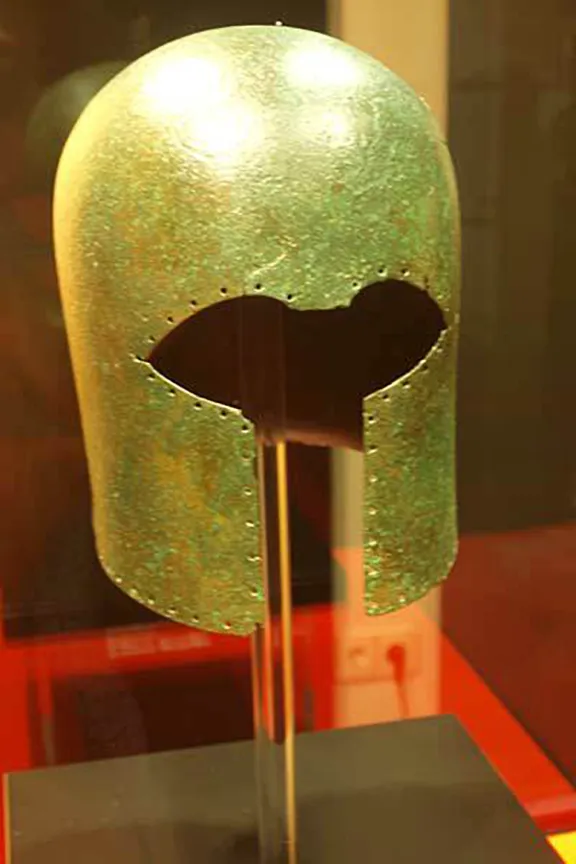
Greek Helmet
The star of the show has to be the Greek Corinthian Helmet dating to the early 7th Century BC. The Greeks at that time were trying to displace the Phoenicians and capture the valuable metallic ore market. The adjective ‘Corinthian’ is not indicative of the piece’s origin, it merely refers to the shape that was most popular among Greek helmets in the Archaic and Classic periods, independent of the place of manufacture. Due to its formal characteristics: markedly vertical proportions in which only one small curve covers at the crown at the back, the uniform thickness at the walls and lack protection of the nasal area, it is considered to be one of the most ancient examples of its kind. It is made from a single sheet of bronze beaten by hammer. It would have covered the entire face, leaving slits for the eyes. Judging by the ring conserved on the upper part, it must have had a crest. Around the edge is a line of perforations, which would have been used to attach a protective leather cover. It was discovered by accident in 1938 on the banks of the Guadalete River, near the ancient estuary.
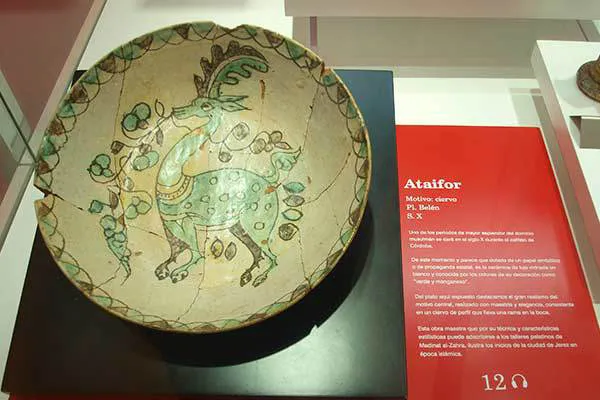
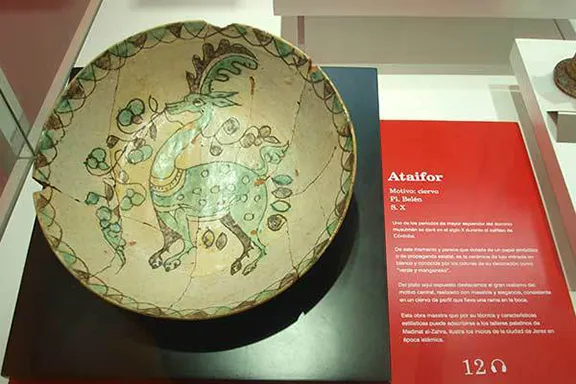
Caliphate Plate
Moving on to the Moorish period the museum has a piece that links this part of Andalucia directly with the Caliphate of Córdoba, a Caliphal Bowl With Stag. From one of the most splendid periods in Muslim rule, this piece dates back to the 10th century. Apparently given a symbolic or advertising role, it is luxury ceramic glazed in white and renowned for its colours, such as “green and manganese”. The magnificent realism of the central motif is very notable. Elegant and skilfully made, it comprises a stag in profile holding a branch in its mouth. The edge is decorated with secant semicircles filled in green and black alternately. This masterpiece can be ascribed to the Palatine workshops of Madinat al-Zahra due to its technique and stylistic features.